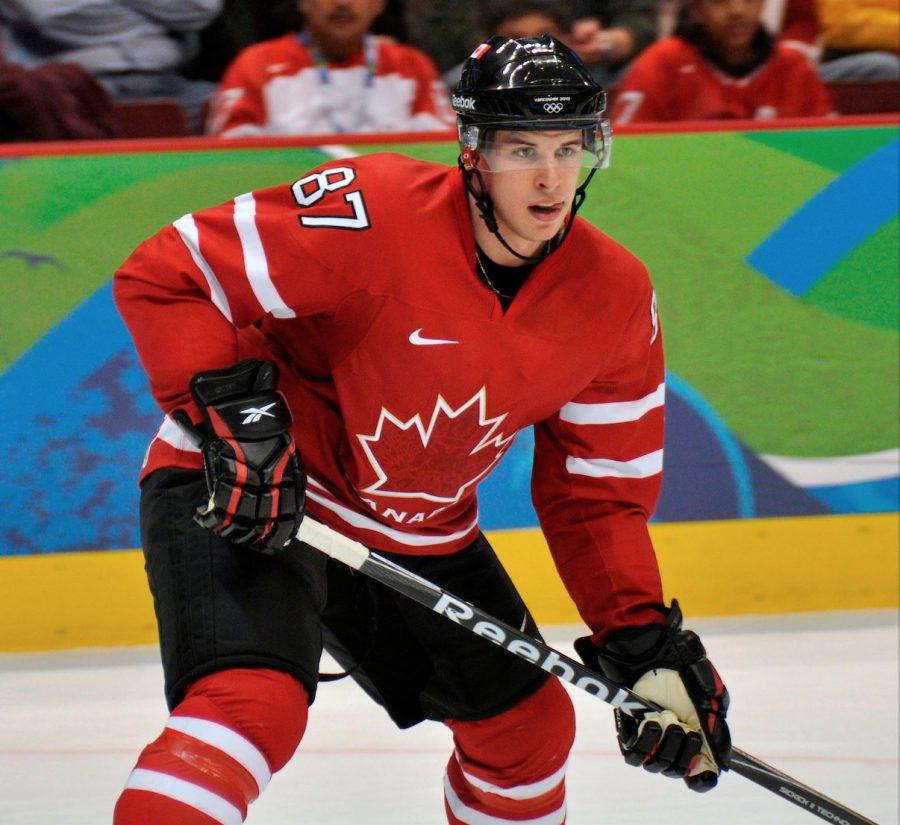Sid vs. Ovi: A Case for Crosby
Canada’s pride and joy Sid the Kid is a generational talent, despite what critics and Ovechkin advocates may say
April 15, 2016
Sidney Crosby is a name consistent with connotations of the elite. At his career’s end, his name will be heard in the same breath as the Gretzkys, Lemieuxs and Orrs of the world. Hell, it already is. He has lived up to every ounce of hype that was accorded to him as he rose the ranks in junior and was touted as The Next One. The lottery that determined the draft order following the 2004-05 lockout that cancelled its season was deemed the Sidney Crosby Sweepstakes. His name has since come to encompass a cultural meaning across hockey. But, as is the life of any superstar pro athlete, it hasn’t always been smooth sailing for him, especially as his career has been juxtaposed with the Washington Capitals’ Alexander Ovechkin’s. Ovi, as he is often referred, plays a starkly different game — even playing a different position — and is two years Crosby’s senior. Coming from warring hockey nations in Russia and Canada, the comparisons have been endless over the years.
Hockey, perhaps more than any other major sport, has an inherently physical nature. For some players, fighting is an essential part of the way they play the game. Crosby, however, tends to lean on his skills before his physicality. As his narrative in the NHL has unfolded, emerging as a superstar in the league alongside Ovechkin, Crosby has received massive flack for the way he plays, oft-being referred to as Cindy Crosby.
The implications are that to be great in this league, one must be physical. The patriarchal underpinnings of the league are such that to imply that one can be great without dropping the gloves at every opportunity is an abhorrence. Crosby is not the only one who has been evaluated through this massively unfair lens. Take the Vancouver Canucks’ Daniel and Henrik Sedin, who are one of the most impactful duos in the league. They have historically stayed out of the box and kept their gloves on and have faced enormous criticism from their peers for their style of play. Dallas’ Jamie Benn and Florida’s Dave Bolland have both taken less-than-savory digs at the twins.
But shouldn’t staying out of the penalty box and focusing on winning games be favored? Stanley Cups aren’t won from the penalty box or the press room. Although it’s not like Crosby has never been penalized in his life — he has 552 regular season penalty minutes in 707 games while Ovechkin has 567 in 839. That makes Crosby the proportionally more penalized player of the two. Speaking of which, how many Cups has he won compared to Ovechkin? The only trophy that Ovechkin and the Caps managed to bring to D.C. is the Presidents’ Trophy, but once the puck drops for the first game of any playoff series, regular season success is irrelevant beyond home-ice advantage.
Ovi did indeed take home Rookie of the Year honors over Crosby in the pair’s freshman season in 2005-2006. Looking at their stats, Ovi had 106 points in 81 games while Crosby had a meager 102. It was an embarrassment of riches in a year that saw two enormous talents enter the league. Factor in the fact that Ovi is, as I mentioned earlier, nearly two years older than Crosby and had been playing pro in Russia before he took the NHL by storm, and maybe it was unfair that two legends in the making had the same rookie year. Crosby has won two Hart Trophies (league MVP) to Ovechkin’s three, though Crosby’s first of those made him the second youngest ever to win one after the Great One, who did it as a Rookie in 1980. One of Crosby’s best seasons — 2009-10 — was cut short by long-term concussion issues. Still, in a season of only 41 games played, he still finished with 66 points, good enough to lead the Penguins in scoring at the season’s end, despite having only participated in half of their games.
On the international plane, Crosby is a member of the elite Triple Gold Club, having won a Stanley Cup, World Championship Gold and Olympic Gold. Ovechkin has but one of those titles. Crosby has gold medals in consecutive Olympic tournaments, the first of which was thanks to his own golden goal. Arguments were made that Crosby failed to stand out as much as he was expected to, but cut the kid some slack. He scored a now-iconic goal to secure a historical win for Canada in 2010, and was the team’s captain in 2014, silently leading a skilled team to gold. Ovechkin, meanwhile was on a Russian team that failed to medal on both occasions, falling to a fifth-place finish at home in Sochi.
Crosby is the posterboy for Timbits hockey in Canada — a hockey organization for children run through Canada’s famous coffee company — and so though he may not portray the amusing media theatrics of Ovechkin, he’s still a cultural icon. No, Crosby might not be the character on and off the ice that Ovechkin is, but he’s the face of hockey in Canada, and Canada is the face of hockey. By logical conclusion, Crosby is the face of hockey.
Email Rachel Ruecker at [email protected].




























































































































































